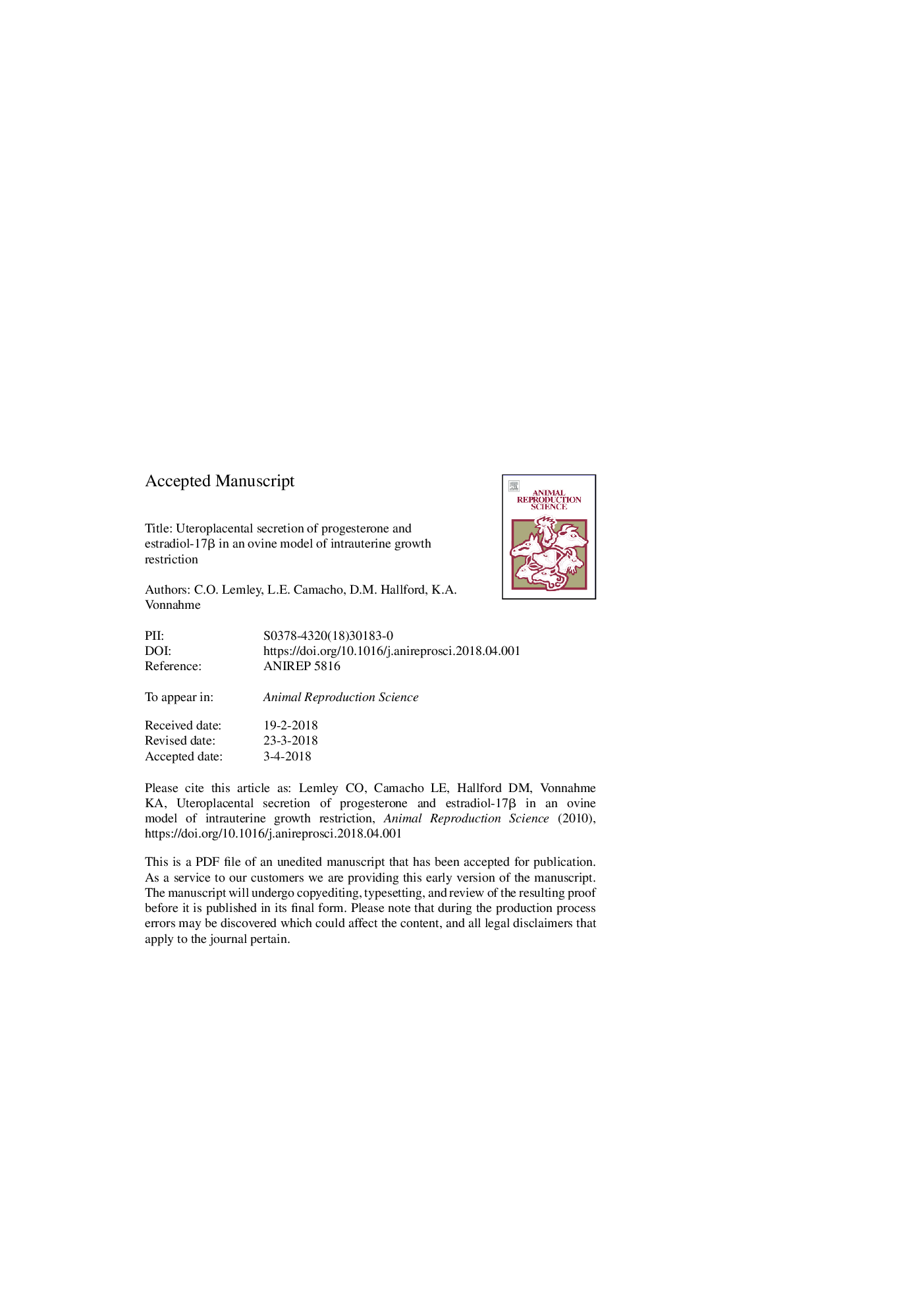| Article ID | Journal | Published Year | Pages | File Type |
|---|---|---|---|---|
| 8403839 | Animal Reproduction Science | 2018 | 29 Pages |
Abstract
Using a mid to late gestation model of intrauterine growth restriction, uteroplacental secretion of progesterone and estradiol-17β were examined. From day 50 to 130 of gestation, 31 ewe lambs were allocated to receive 100% (ADQ) or 60% (RES) of nutrient requirements. At day 130, umbilical and uterine artery blood flows were determined and blood samples were collected from maternal saphenous artery, gravid uterine vein, umbilical vein, and umbilical artery. Uteroplacental secretion of progesterone was increased in RES compared to ADQ fed dams. There was a net secretion and net metabolism of estradiol-17β in RES, and ADQ fed dams, respectively. In relation to steroid synthesis, cotyledonary abundance of steroidogenic acute regulatory protein was greater in RES compared with ADQ fed dams, while abundance of aromatase was not different between dietary treatments. Caruncular aldo-keto reductase 1C abundance was less in RES compared to ADQ fed dams. The increase in progesterone secretion, therefore, is due in part to an increase in synthesis and a decrease in placental catabolism. Caruncular cytochrome P450 3A, which catalyzes the conversion of estrogens to catechol-estrogens, was in lesser abundance in RES compared to ADQ fed dams. Opposite responses in estradiol-17β uteroplacental secretion compared with metabolism may be mediated through placental estrogen metabolism via cytochrome P450 enzymes.
Related Topics
Life Sciences
Agricultural and Biological Sciences
Animal Science and Zoology
Authors
C.O. Lemley, L.E. Camacho, D.M. Hallford, K.A. Vonnahme,
